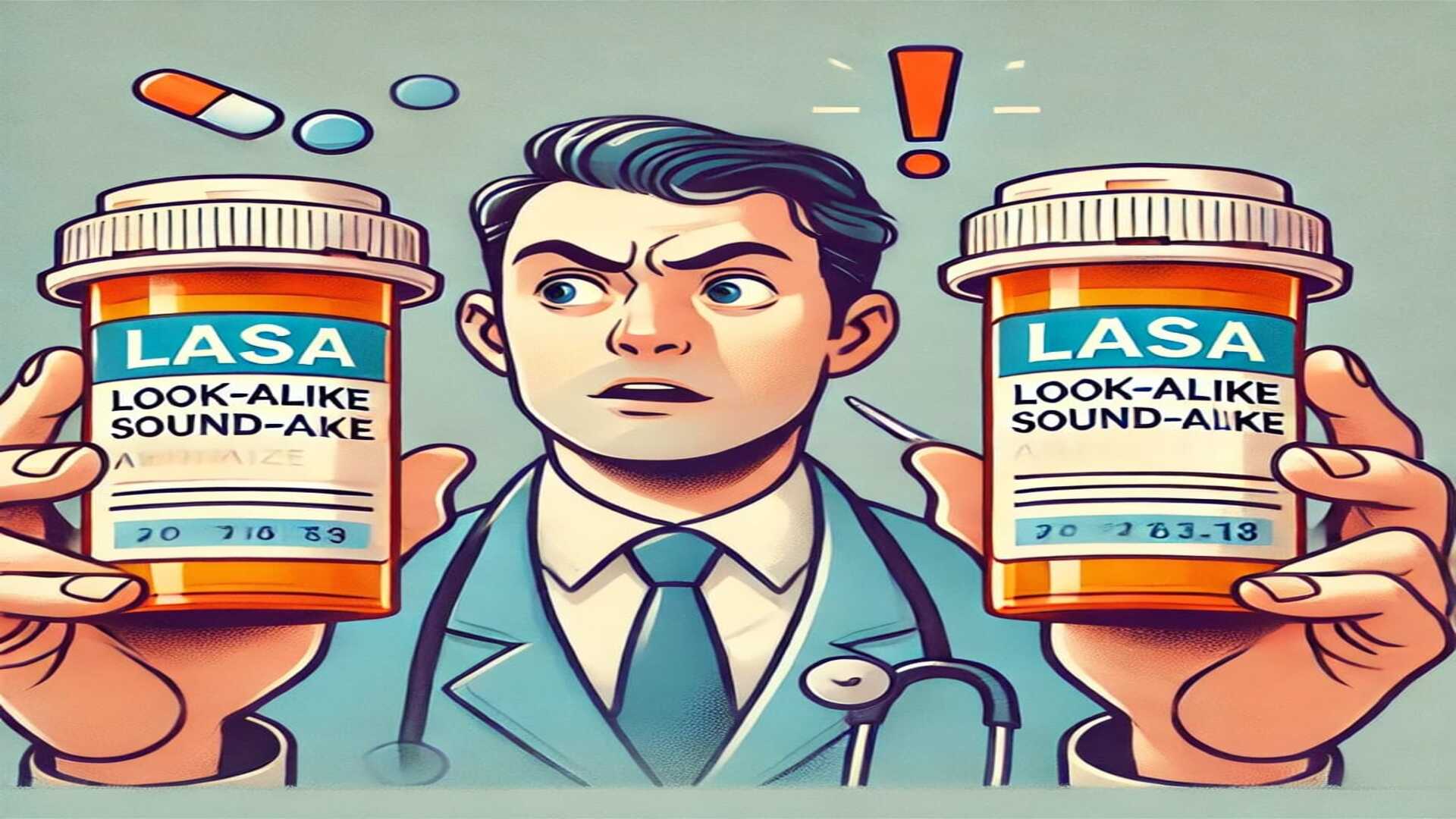5,419 Views
LASA Medications
LASA medications refer to drugs with similar names (in spelling or pronunciation) or similar physical appearances (such as packaging or color), which can lead to medication errors in prescribing, dispensing, or administering drugs.
Examples of LASA Errors
LASA errors occur due to similarities in the letters that make up the names of different drugs, whether at the beginning, middle, or end of the name.
At the Beginning:
- AM: Amiloride, Amitriptyline, Amlodipine
- AZ: Azathioprine, Azithromycin
- CARB: Carbimazole, Carbamazepine
In the Middle:
- GABA: Pregabalin, Vigabatrin
At the End:
- AZOLE: Metronidazole, Omeprazole
Why Are LASA Drugs a Problem?
- Incorrect drug selection → Leads to ineffective treatment or severe side effects.
- Drug interactions → Increase the risk of adverse reactions.
- Overdose or underdose → Occurs due to different drug strengths.
- Fatal consequences → Can result from high-risk drug mix-ups.
How to Prevent LASA Errors?
Medications Actions
- Tall Man Lettering → Highlight differences in similar names (e.g., dilTIAZem vs. diazePAM).
- Check both brand and generic names → Reduces confusion between similar-sounding drugs.
- Proper storage → Keep similar drugs separate to prevent mix-ups.
- Clear labeling → Use distinct packaging and warning labels.
- Develop and update its drug lists → Maintain an up-to-date reference of high-risk LASA medications.
Patients and Caregivers Actions
- Know the prescribed medications → Understand their name, indication, strength, and dosage.
- Be aware of potential errors → Educate yourself on commonly confused drugs.
- Store medications properly at home → Prevents mix-ups.
- Consult healthcare providers → Before taking any new medications or if there is any doubt.
Healthcare Workers Actions
- Pay close attention to LASA drugs when prescribing, dispensing, and administering medications.
- Use generic names during prescribing to minimize confusion.
- Attach clear labels to medications to prevent mix-ups.
- Educate themselves and patients about LASA drugs and their risks.
By implementing these safety measures, the risk of LASA-related medication errors can be significantly reduced, ultimately enhancing patient safety and medication accuracy in clinical practice.
Share your own article on Aumet Blog
To learn more about Aumet, contact us!










